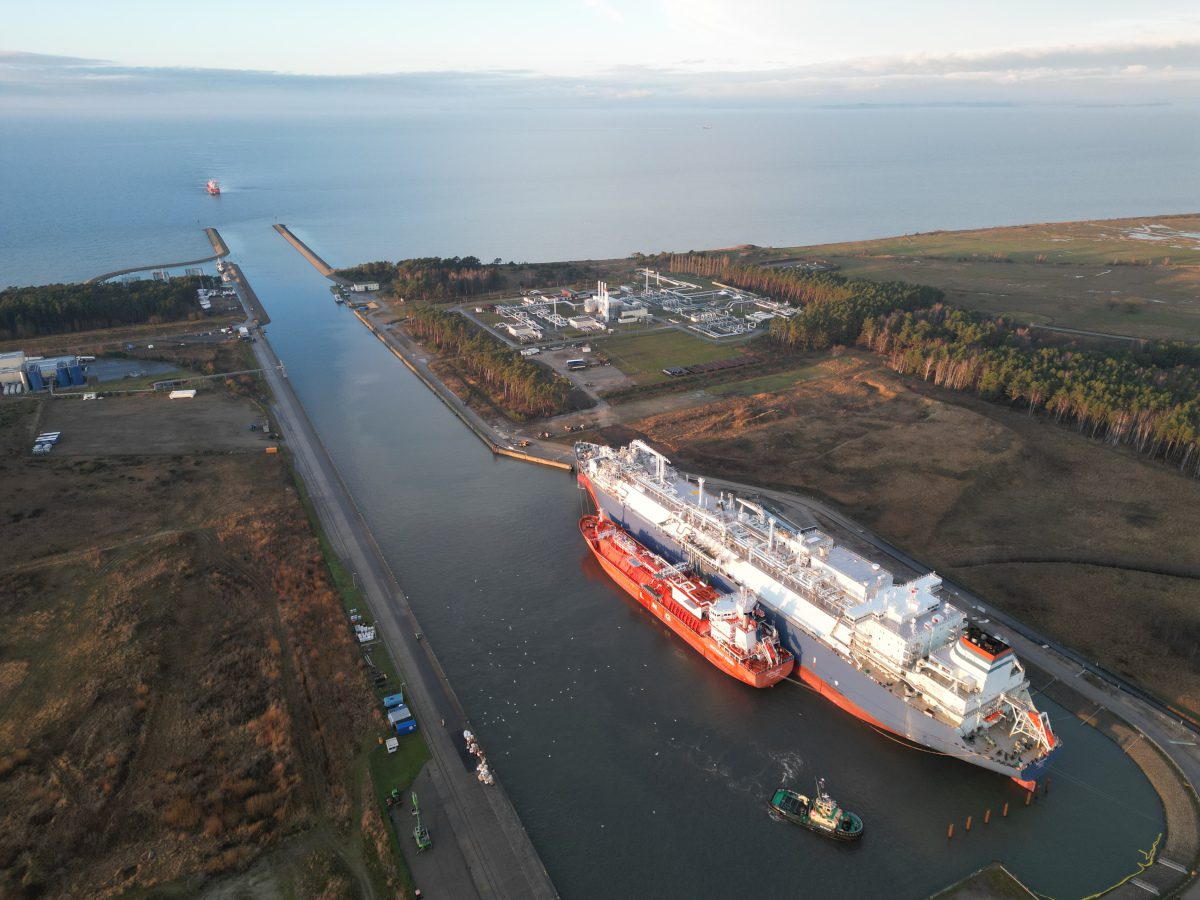German LNG terminal operator Deutsche ReGas is moving forward with its plans to produce green hydrogen in Lubmin.
According to a statement by Deutsche ReGas issued on Tuesday, the company has now started the front-end engineering and design (FEED) phase for a large-scale electrolysis plant which separates water into hydrogen and oxygen with the help of renewable electricity.
The German firm led by Ingo Wagner and Stephan Knabe expects to launch the first phase of the plant with 200 megawatts (MW) in operation in the second half of 2026.
As part of the second stage, the firm plans to add 300 MW from 2028.
Moreover, the LNG terminal operator expects to produce 30,000 tons of green hydrogen per year in the first phase.
Including both of the phases, production could reach around 80,000 tons per year.
Deutsche ReGas said the electricity required for production from renewable energies would be generated from offshore wind power arriving in Lubmin and additionally from onshore electricity.
The green hydrogen can be transported via the pipeline planned by Gascade as part of the project “Flow – making hydrogen happen” project, it said.
Deutsche ReGas has already purchased an approximately six-hectare site for the project at the industrial port of Lubmin in the summer of 2022, and it recently also expanded this site.
Mukran LNG terminal
Last month, Deutsche ReGas said companies have booked all of the offered regasification capacities at its planned FSRU-based LNG import terminal in the German port of Mukran.
This followed the conclusion of the binding open season as part of the second phase of the “Deutsche Ostsee” LNG terminal at the port of Mukran on the island of Rügen.
Deutsche ReGas officially launched its Lubmin FSRU-based LNG import terminal in January this year.
The 5.2 bcm facility is the first private LNG terminal in Germany besides the government-backed facilities.
Deutsche ReGas chartered the 2009-built 145,000-cbm, FSRU Neptune, from French energy giant TotalEnergies for this project.
The company also confirmed in June that it plans to install the 174,000-cbm FSRU Transgas Power, owned by Dynagas, to serve the LNG import terminal in the port of Mukran.
This FSRU will work along the FSRU Neptune in Mukran as part of the second phase of the LNG terminal.
The second phase of the terminal will have a capacity of up to 13.5 bcm per year, Deutsche ReGas said.
Deutsche Regas will move the FSRU Neptune from Lubmin to the Mukran port later this year.
Moreover, the FSRU-based terminal will connect to the gas transmission network via a new Mukran-Lubmin connecting pipeline.
Germany’s Gascade, which built the Lubmin LNG pipeline, is in charge for this pipeline as well.
Gascade expects the terminal to start operations in the first quarter of the next year.
This terminal has faced strong opposition from environmental groups in Germany.

